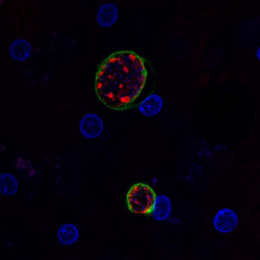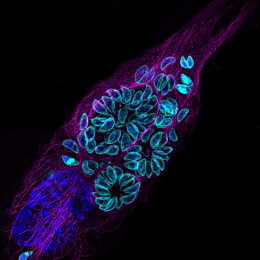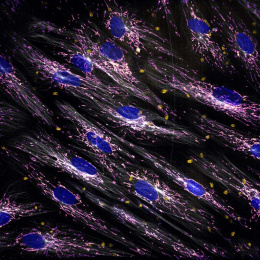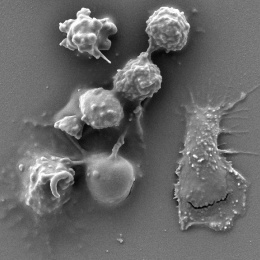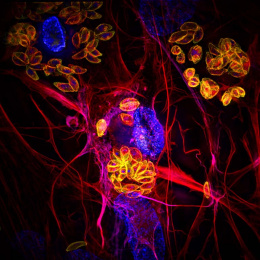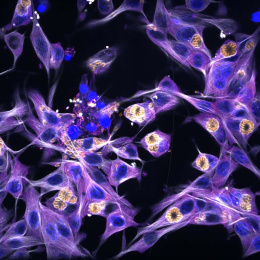Every Rosette Has its Thorn: Maintaining Stability in a Mutable World
Every Rosette Has its Thorn: Maintaining Stability in a Mutable World
Collections: Image Award Winners
2018 Award Winner
Clare Harding, Sebastian Lourido
MIT Department of Biology, Whitehead Institute
The flower-like rosettes show Toxoplasma gondii parasites multiplying inside a single human cell (shown in red). The daughter cells (visible inside their mothers at the bottom of the image) will eventually grow, causing the parasites to destroy their host, before seeking out new cells to invade.
Outlined in white is GAPM1a, a protein that maintains the shape and stability of these organism. Without it, the parasites collapse, rendering them unable to replicate and produce new daughter cells. The Lourido Lab studies such proteins to answer fundamental questions in cell biology. Their results suggest that stability and structure are what new generations need to survive, thrive, or even bloom.

Video
Clare Harding shares the story behind her award-winning image. You can also watch her presentation from the exhibit opening on March 8, 2018 here.
